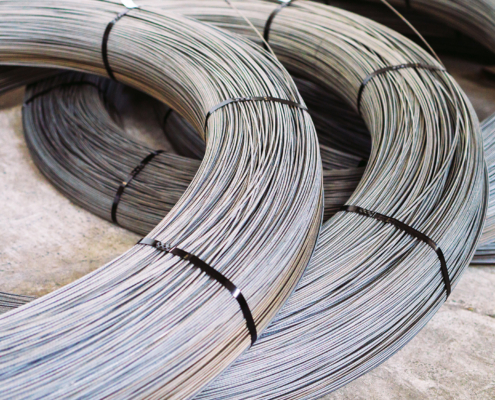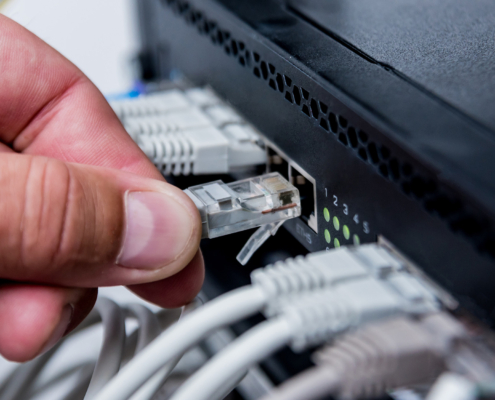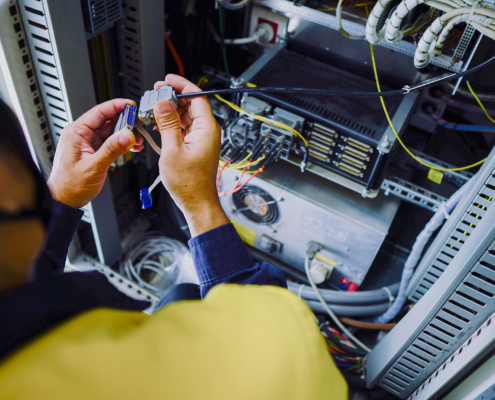 https://ringandping.com/wp-content/uploads/2025/07/How-Poor-Cabling-Can-Disrupt-Your-Warehouse-Operations.jpg12502000Abstrakt Marketing/wp-content/uploads/2024/05/ringandping_logo.svgAbstrakt Marketing2025-07-28 07:41:112025-08-19 13:59:44How Warehouse Cabling Problems Can Disrupt Your Operations
https://ringandping.com/wp-content/uploads/2025/07/How-Poor-Cabling-Can-Disrupt-Your-Warehouse-Operations.jpg12502000Abstrakt Marketing/wp-content/uploads/2024/05/ringandping_logo.svgAbstrakt Marketing2025-07-28 07:41:112025-08-19 13:59:44How Warehouse Cabling Problems Can Disrupt Your OperationsFiber optics relies on transmission of light through on a clear pathway to function properly. A single dust particle on the core of a fiber can cause signal loss and reflection resulting in high error rates and lowered overall network performance. Just one tiny spec of dust can wreck havoc on your network and cause you costly downtime. That’s why it is so important to maintain a regular cleaning and preventative maintenance schedule. Many people install their fiber optic cabling with the recommended dust covers and caps, thinking it means no cleaning or maintenance will be required but that is absolutely incorrect. Even with preventative dust covers, it is still possible for contamination to occur. In fact, the plastic in the dust caps tend to deteriorate over time and ends up leaving a residue on the end-faces they cover. Any time an end-face is exposed to the environment, it is subject to contamination, especially in the presence of static electricity. There is a three-step process for cleaning fiber: inspect, clean, and inspect again. Inspection should be done not only visually, but also with a video microscope specifically designed to inspect fiber. The tiniest scratch or spec of dust can hinder performance so the inspection should not be left to the naked eye. In addition, the IEC has created a set of standards called the 61300-3-35 Basic Test and Measurement Procedures Standard for Fiber Optic Interconnecting Devices and Passive Components. These standards ensure that the fiber cleanliness is not left up to the technician’s subjective opinion. It is extremely important that during the maintenance every end-face be cleaned, not only the ones that are easy to access. Contaminants can easily migrate from one port to another. In a systematic process, each end face should be inspected, if it fails the inspection under the microscope, it should then be cleaned and inspected again. If after cleaning it still does not meet the necessary standards, it should be replaced. While this may seem costly, it is much less expensive to maintain than have your entire network fail due to neglect. Only two cleaning tools are necessary, wipes and solvent. Each end-face that fails initial inspection should be wiped with a wet wipe and then a dry wipe to remove all of the cleaner before it is inspected for the second time. Cans of compressed air do not belong anywhere near a fiber network. While great for cleaning out a keyboard. Compressed air will only blow dust particles around, likely moving them to a new area instead of removing them. They are also completely ineffective at removing other contaminants like oils and other residue. If you’d like to set up a regular maintenance and cleaning schedule for you fiber network or would like to learn more about it, call us at (714) 617-4025, or contact us online for a 100% free, no obligations quote. Ring and Ping Communications has been Southern California’s leading expert in fiber optics and network cabling for businesses both big and small for the last 12 years and we look forward to helping you with your network cabling and maintenance needs.
Share This Post
More Like This
 https://ringandping.com/wp-content/uploads/2025/07/How-Poor-Cabling-Can-Disrupt-Your-Warehouse-Operations.jpg12502000Abstrakt Marketing/wp-content/uploads/2024/05/ringandping_logo.svgAbstrakt Marketing2025-07-28 07:41:112025-08-19 13:59:44How Warehouse Cabling Problems Can Disrupt Your Operations
https://ringandping.com/wp-content/uploads/2025/07/How-Poor-Cabling-Can-Disrupt-Your-Warehouse-Operations.jpg12502000Abstrakt Marketing/wp-content/uploads/2024/05/ringandping_logo.svgAbstrakt Marketing2025-07-28 07:41:112025-08-19 13:59:44How Warehouse Cabling Problems Can Disrupt Your Operations
5 Ways Your Business Can Benefit From Improved Warehouse Cabling in Orange County

The Top LA Warehouse Network Cabling Challenges

Common Warehouse Network Issues and How to Avoid Them at Your Facility

Why Reliable Network Cabling is Vital for Large Warehousing Operations

The Role of Network Cabling in Modern Warehouses

Choosing the Right Network Cabling for Your Warehouse: A Complete Guide

Premise Distribution Systems (PDS) and Why Fiber Optics Are the Future



